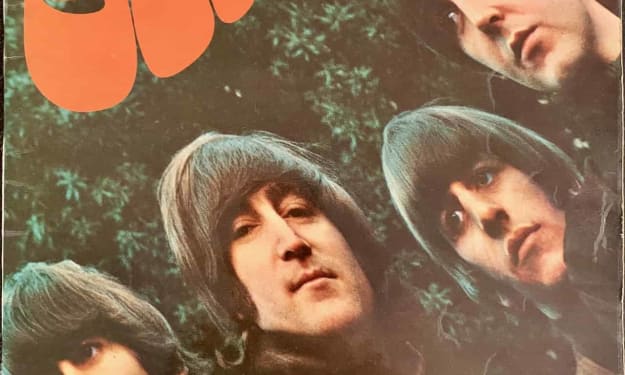Flute in Prog Rock: Why so Popular?
A look at two of progressive rock's most prolific bands: Jethro Tull and Genesis, and their oddly common use of the flute.

Genesis and Jethro Tull: although covering a range of styles, sounds and characters, they are united in their association with the 'progressive rock' movement. The movement, spanning mainly the 1970's, can be defined most simply by its experimentation on the rock genre. Unlike many movements which organically developed into new, yet still related, genres after their initial creation, the progressive rock known to the seventies remains a genre standing still in music history. The movement’s ephemeral nature has since attracted nostalgia-fuelled and cult-style enthusiasm even by those having not lived through the genre (including myself). The stylistically ‘undefinable’ movement was reliant on the unique experimentations of the respective artists. Every band had their sound and ever musician their unique voice, but the fact that they were following a path until then untrodden (experimentation on the fairly new genre of rock), united these artists. And while progressive rock does not have a monopoly on experimentation or progress in music, musical developments following the genre (even those still aiming for progress), nevertheless conformed to the industry’s goal for more financially exploitative and efficient works. This was mainly due to the irresistible potential of new technology. As a consequence, the raw and unfiltered sounds of 1970’s progressive rock became forever organically irreproducible (any reproduction would’ve been unauthentic and pastiche) and simply commercially unattractive or risky. In being so fearless in the search for rock’s limits, the movement offered us distinctive and eccentric sounds yet to be reproduced. Among this, was the inclusion of surprising instruments, such as the flute.
It was an impassioned (and more often than not LSD infused) striving for more and more complex and frankly weird sounds and structures which united these groups. The choice and implementation of instruments uncommonly associated with rock was a common way in which to achieve individuality. The flute became an oddly common example of this. With its varied cultural connotations, the instrument allowed for many bands to set themselves loose. The instrument’s use was a symbol of the musicians’ attempt to break from rock tradition. It is also strongly representative of how the movement’s increasing detachment from rock allowed for them to go from fringe to (almost) mainstream, with rock classics such as ‘Aqualung’ or ‘Heart of The Sunrise’. It goes without saying that this was not necessarily true for all bands, but it was by far not uncommon. An investigation into the varied uses of the flute in the movement’s most prolific bands can highlight, even more vividly, the movement’s unique and timeless spot in history.
Genesis front man (until 1975) Peter Gabriel made use of his flautist skills often in the bands more experimental songs. A notable example: ‘Supper’s Ready’ from the 1972 album Foxtrot. This 20-minute work is divided into seven parts, all of which exhibit unique timbres and colours and make use of a variety of techniques. A flute solo is inserted at the end of part five ‘All Change’ and part six ‘Apocalypse in 9/8’. It works as a segway between heavier, denser and more disturbing surrounding passages. This is common of the band’s use of the flute more generally. Its timbre and Gabriel’s timid playing acts as a gentle contrast from the song’s otherwise intense character. It is accompanied solely by arpeggiated and scalic features from the guitars and organ. The flute’s dreamy timbre also works well with the song’s more fantastical elements, with the solo bringing us into a harsh cry from Gabriel with the lyrics ‘With the Guards of Magog Swarming Around’, followed by mentions of the Pied Piper and dragons.
Listen to Genesis' 'Supper's Ready' (Skip to 14:18 for the solo)
Much like in ‘Supper’s Ready’, ‘Musical Box’ from the 1973 Nursery Cryme allocated the flute a transitory function and an intimate and gentle nature. On either side of the solo similar material is placed, adding a transformational function to the solo. This implies that the solo has helped either shape or develop our consequent understanding of the returning theme. Due to the flute’s calming nature, it allows the listener to hear the theme in a new light, before the introduction of a heavy rock section. ‘Firth of Fifth’, from the 1973 album Selling England by the Pound, is perhaps their best and most famous use of the flute. A transitory nature could still be interpreted, but the passage is still, by all means, a solo. It introduces the theme later recreated by an extensive electric guitar solo. This positions the flute on the same level as the electric guitar in terms of soloistic, as well as structural, importance. Unlike the guitar solo, however, an intimate and vulnerable tone is once again employed. It also offers a beautiful contrast and timeless moment, releasing much tension from the earlier bass heavy and texturally thick music. The flute is accompanied by an arpeggiated bass and piano line: a sparse accompanying texture reminiscent of that in ‘Supper’s Ready’.
Listen to Genesis' 'Firth of Fifth' (Skip to 3:30 for the solo)
The flute’s function in Genesis’ songs is fairly consistent throughout. It repeatedly acts as intimate and contrasting transitory element, usually sandwiched between emotionally intense moments. Despite its more vulnerable nature, however, the flute’s importance should not be underestimated. It is clear that the band knew impressively well how to make full advantage of the flute’s features and potential. Genesis was known for their multifaceted and complex musical explorations, and the flute’s ephemeral and other-worldly colour allowed for the denser moments’ complexities to be elevated more efficiently. The flute’s solos are also very simply beautifully written melodies, always fascinating in their harmonic and timbral twists and turns. Genesis’ use of the flute accepts and completely assumes their unique style. The flute could not be used in any other way without compromising their intense and densely experimental style. And all while offering the listener a soothing rest, the flute still adds to the band’s overall experimental nature.
Of all progressive rock bands, Jethro Tull offers perhaps the most varied and fascinating uses of the flute. Although still experimental, Jethro Tull’s styles and structures are in general simpler or more stylistically consistent than other bands of the era. The band cleverly makes full use of the flute’s cultural and musical connotations. I have always seen the group in light of their unique 'medieval' or ‘ancient’ sounds and elements. Their use of modes, choice of folk-like instruments and dance-like moments (not to mention Ian Anderson’s choice of clothing) illustrate, if not completely accurately, the mainstream vision of a medieval fete or ritual. Picture them as the rock equivalent of an overexcited bard and folk band in a tavern playing to drunken peasants dancing jigs. And even having composed some of rock's most classic songs and riffs, such as 'Aqualung', they have always stayed true to their rugged and raw style. This is no truer than the flute solos by lead singer, Ian Anderson, known for his wild and engaged live performances (often with flute in hand). Having eased up to Genesis’ most notable flute example, we now dive straight into Jethro Tull’s: Bourée. Inspired by Johann Sebastian Bach’s Bourée in E minor, the piece is a four-minute experimental flute solo gradually accompanied by more and more of the band’s instruments. It begins with a swung version of the Bourée accompanied by a lone electric bass line paralleling Bach’s harmonic developments. True to Bach’s original, the theme is then repeated and is now accompanied by a second flute offering a contrapuntal and conversational line. The flute then goes on a wild flurry of improvisations over the harmonies, this time accompanied by the whole band and another layered flute. Anderson’s use of the flute’s techniques, ranging from harsh sounds to sweet melodic lines, offers a brilliant introduction to the use of the instrument in a great number of other songs.
Listen to Jethro Tull's 'Bouree'
In the song 'Acres Wild', from the 1978 album Heavy Horses, Anderson’s flute reinforces the song's medieval/folk style. He incorporates short, savage flute flurries and rapid soloistic interjections. It really paints the picture of the demented and crazed flautist those in the tavern has forgotten they’d invited. In 'Locomotive Breath', from the band’s celebrated 1971 album Aqualung, the flute is used in a very similar, crazed and flurried manner. Albeit, this time, in a more blues-inspired context. In the case of Thick as a Brick, the flute is manipulated in much more elaborate ways. The 1972 concept album, split into two 20-minute halves named, appropriately, 'Thick as a Brick Pt.1' and 'Thick as a Brick Pt.2', stays true to the era's concept album trend in which lengthy works are structured into smaller parts, yet not explicitly separated as individual tracks. This is true of ‘Supper’s Ready’ and to some extent, Pink Floyd’s ‘Shine on you Crazy Diamond’ tracks. What is interesting about the flute’s use in Thick as a Brick, is its structural importance. It is included in almost all of the work's smaller segments and more often than not plays a crucial part in announcing new themes and motifs. True to Anderson’s style, he explores various styles and sounds, this time adding to 40 minutes of uninterrupted and structurally self-sufficient music, rather than shorter, individual songs. It elevates the flute’s potential in being a critical element of the band and the song’s meaning and goals.
Listen to Jethro Tull's 'Acres Wild'
The flute flaunts many attributes attractive to those wanting to experiment. Its timbre can point towards a plethora of styles, from jazz and folk music to symphonic and classical music. Physically, it is a flexible and small instrument, making it an attractive tool purely in terms of having it onstage, especially for lead singers not already encumbered by another instrument. It is not a coincidence, in fact, that it is the lead singers which often play the instrument. In all its versatility, the flute is most often praised as a soloistic instrument, and this is commonly how it is used in these songs, despite various other intertwining functions and uses. Despite having only looked at Genesis and Jethro Tull, it must not be forgotten that the flute was used in many other bands of the era and style, including King Crimson and Premiata Forneria Marconi. True to their experimental nature, these groups add even more uses and functions to the flute than Genesis and Jethro Tull couldn’t have even imagined. Perhaps more than any other instrument used in progressive rock bands, the flute is one which best exemplifies the genre’s attempt to push the boundaries. And in discussing the instrument’s oddly common use, I hope to have opened your eyes to the style’s distinctive place in musical history. This is but a peek into the ephemeral and never reproduced rich world of unique musical colours and styles that is 1970’s progressive rock. And it is with great pride that I hope to have enticed at least a few of you to explore it!
Rita Fernandes
About the Creator
Rita Fernandes
Musician with a passion for writing and sharing ideas.
Creator of the music blog www.listenandwrite.org






Comments
There are no comments for this story
Be the first to respond and start the conversation.